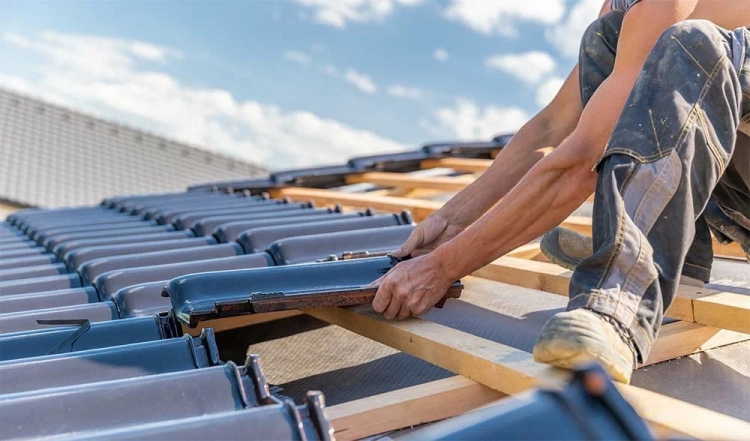How Roofers Manage When a Skylight is Leaking?
At S. Tomic Roofing LTD, select experienced roofing contractors that best fits your specific needs and ensures quality workmanship.

Skylights are a great addition to a home, offering natural light, ventilation, and an aesthetically pleasing design element. However, when a skylight begins to leak, it can cause significant damage to the interior of the building, leading to costly repairs if not addressed promptly. Roofers are trained to manage skylight leaks with expertise, ensuring that both the immediate problem and any underlying causes are resolved efficiently. Below, we explore the steps Roofers Birmingham typically take when handling a leaking skylight.
Inspecting the Skylight and Roof Area
The first step in addressing a leaking skylight is thorough inspection. Roofers will assess the skylight and the surrounding roof area to pinpoint the source of the leak. This may involve:
Checking for Visible Cracks or Gaps:
The roofer will closely examine the skylight frame, glass, and seals for any visible cracks, gaps, or damaged flashing.
Examining the Roof Decking:
The roof beneath the skylight is also inspected for damage or water penetration, as leaks may occur from a compromised roof rather than the skylight itself.
Assessing the Flashing:
Flashing is a critical component that seals the edges of the skylight and prevents water from seeping through. Roofers will check for improperly installed, corroded, or missing flashing.
Inspecting Seals and Caulking:
The seals around the skylight are examined to determine if caulking or weatherproofing materials are cracked or degraded.
Identifying the Cause of the Leak
Once the roofer completes the inspection, they will identify the root cause of the leak. Several factors may contribute to a leaking skylight:
Improper Installation:
One of the most usual reasons of skylight leaks is deprived installation. This can involve misaligned flashing, improper sealing, or inadequate sealing of joints between the skylight and the roof.
Damaged Seals or Caulking:
Over time, the weatherproofing materials around the skylight, such as caulk, rubber seals, and flashing, can break down due to exposure to the elements, causing water to seep inside.
Cracked Glass or Acrylic:
The skylight’s glass or acrylic lens may have sustained physical damage, such as cracks or chips, that allow water to penetrate.
Clogged Drainage Channels:
Many skylights are designed with drainage systems to direct water away from the unit. If these drainage channels become clogged with debris, water can pool around the skylight and cause leaks.
Roof Damage:
If the roof around the skylight is damaged (e.g., missing shingles, damaged flashing, or roof decking issues), water can enter the skylight area and cause leaks.
Temporary Leak Control
Before beginning repairs, roofers often take immediate steps to prevent further water damage to the interior of the property. These actions may include:
Applying Temporary Tarps:
Roofers will use a heavy-duty tarp to cover the leaking skylight, preventing more water from entering until a permanent repair is completed.
Using Waterproofing Tape or Sealants:
In some cases, the roofer may apply waterproofing tape or sealant to cover smaller cracks or holes to stop water from entering.
Relieving Water Build-Up:
If there is pooling water around the skylight or roof, roofers may clear drainage channels or remove debris to alleviate further water accumulation.
Repairing the Skylight
Once the source of the leak is identified and the area is secured, roofers will proceed with repairing the skylight.
Replacing or Resealing Flashing:
If the flashing is damaged or improperly installed, the roofer will replace it with new, properly sealed flashing to create a waterproof barrier around the skylight. This may involve removing the old flashing, cleaning the area, and carefully fitting new flashing into place.
Resealing or Replacing Seals:
If the leak is due to worn-out or damaged seals around the skylight, the roofer will replace the seals or apply fresh caulking to ensure a tight, waterproof seal. Specialized roofing sealants are used to ensure the new seals remain durable in harsh weather conditions.
Replacing Cracked or Broken Glass:
If the skylight's glass or acrylic is cracked, the roofer may need to replace it entirely. This involves removing the old glass, cleaning the frame, and installing a new, properly sized glass or acrylic panel. In some cases, the roofer may recommend upgrading to tempered or laminated glass for increased durability.
Cleaning and Clearing Drains:
If clogged drainage channels or flashing are causing water to pool around the skylight, roofers will clear debris and ensure the drainage system is functioning correctly.
Final Cleanup
Roofers will clean the area around the skylight, removing any debris from the repair process, ensuring no leftover materials could cause problems later. Proper disposal of old materials, such as damaged flashing or broken glass, is essential for maintaining a tidy worksite.
Conclusion:
When dealing with a leaking skylight, Roofers in Solihull follow a methodical process to inspect, identify, repair, and prevent further damage. Regular maintenance and timely repairs are key to prolonging the life of skylights and preventing future leaks.
What's Your Reaction?
















